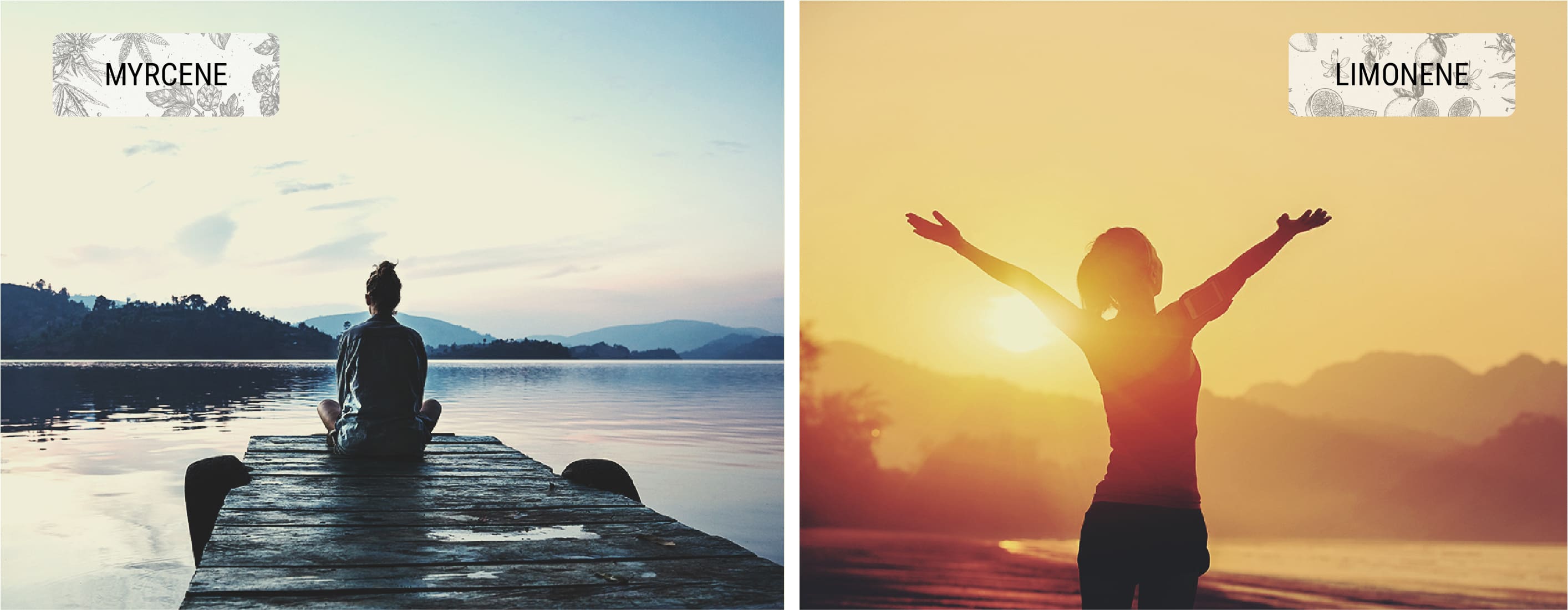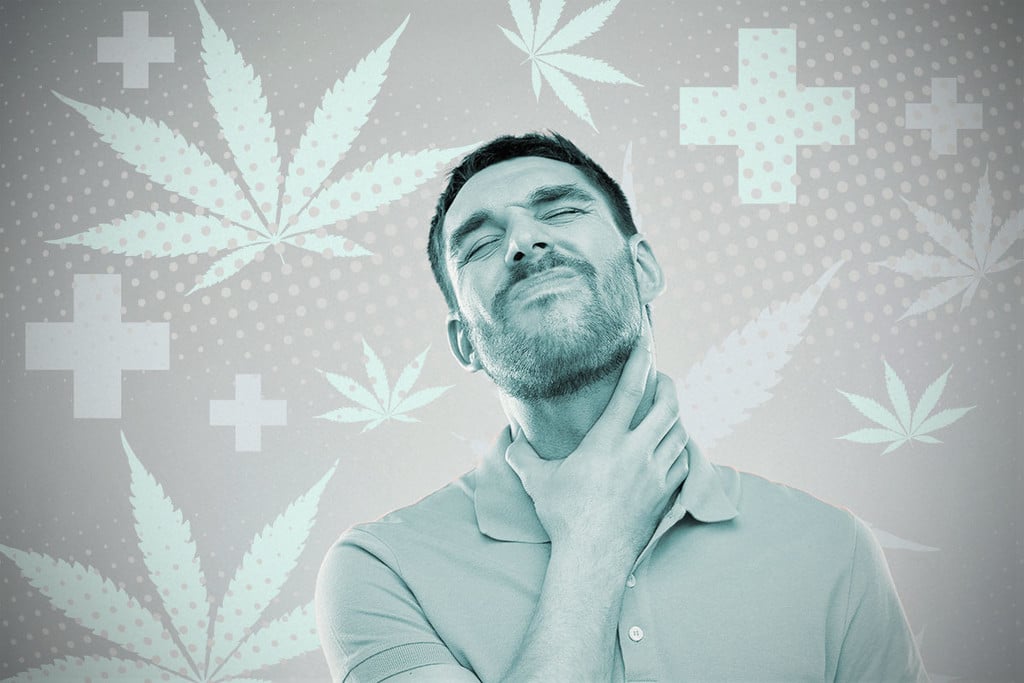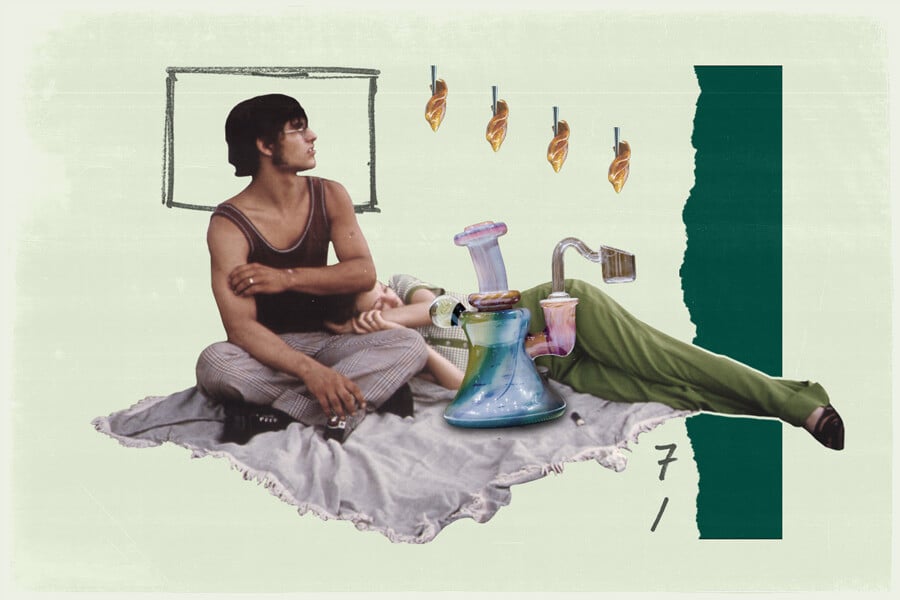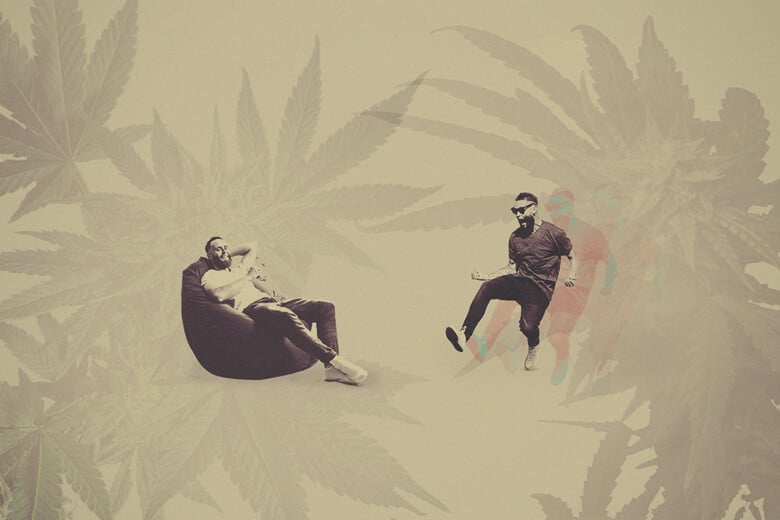.

High vs Stoned: Is There Really a Difference?
Is being high the same as being stoned? Or are they distinct experiences? And what about being buzzed, baked, and couch-locked? If you're overwhelmed by the sheer amount of lingo, allow us to explain the differences between high, stoned, and other terms used to describe the cannabis experience.
Contents:
Today, cannabis is becoming more widely accepted and enjoyed. As a result, people have tons of questions surrounding the herb’s effects.
As we know, cannabis is most often cited for its psychotropic properties and the intoxicated feeling users experience after ingesting. The words “high” and “stoned” are frequently used interchangeably to describe the outcomes of using THC-rich cannabis. But are they really the same thing?
If you’re as confused as the next person, fret not. This post will help you understand the differences between being “buzzed”, “high”, “couch-locked”, “baked”, and “stoned”. And even if you have your own definitions, but are nonetheless curious, this article should serve you well.
What Does It Mean To Be Buzzed?
As you’ll find out by reading this text, there are different levels of cannabis impairment. Being buzzed is the very first feeling you’ll experience after that first bong rip or vaporiser toke.
The name itself is a giveaway. A "buzz" is that initial jolt to the system as the intoxicant enters your bloodstream. Slowly but surely, you’ll feel the changes creep in as you move into an altered state of consciousness.
At this point, you’re not incapacitated just yet, but you’re already exhibiting signs of the substance kicking in, such as giggles and euphoria.
What Does It Mean To Be High?
You’ve now entered level two—you're high. This is defined by a classic uptick in energy and mood; you know, that feeling you get after finishing a joint with friends. The high depends on a few variables: method of consumption, potency of the strain, and one’s level of smoking experience.
Regarding strain quality, high-grade weed can keep you high for about 3–4 hours. But what does it feel like to be high? Once the initial buzz has been ratcheted up to the next level, a variety of sensations may be experienced.
While some feel infectiously sociable and giggly, others experience a bit of paranoia and anxiety at this peak level of inebriation.
And of course, we couldn’t describe what it’s like to be high on weed without mentioning the red eyes, low lids, and infamous cotton mouth associated with this stage.
Now, there are two different states of being high; you have the cerebral high, and the physical high.
The former is defined by mental stimulation; you’ll feel alert, focused, creative, and in an overall better disposition. The latter experience is more centred on physical sensations. You may not feel very productive, or like doing anything at all, but that’s not always a bad thing! Upon experiencing a particularly heavy body high, you may even experience “couch-lock”—a desire to do nothing but recline on the comfiest piece of furniture available.


-
Why Do We Get High?
Let’s get a little scientific here. Short answer: it all lies in the endocannabinoid system. The ECS is an all-encompassing regulatory system that oversees numerous bodily functions to keep everything stable and balanced.
Given the existence and function of the ECS, our bodies naturally produce signalling molecules known as endocannabinoids. One of them is anandamide, which, upon binding with CB1 receptors of the ECS, induces warm, positive emotions. This is how anandamide got its label as the “bliss molecule”.
THC acts similarly in the body, mimicking anandamide and binding to CB1 receptors in the brain—only THC's effects are even stronger than the endocannabinoid, resulting in the classic cannabis high.
Your preferred method of consumption also plays a role here—but let’s focus on smoking. Shortly following that first toke, the high begins to creep in. Your body starts to feel lighter, but at the same time, activity in your mind ramps up. It's almost like your brain is coming to life. But it’s not until about 15–30 minutes later that you’ll reach the peak of your high. At this point, you’ll feel a strong sense of motivation and creativity.
What Does It Mean To Be Stoned?
The origin of the term “stoned” dates back to biblical times when wrongdoers were bombarded with stones as a form of punishment. The term took off around the 1920s and 30s to describe people who had too much to drink—who looked as if they were subject to a barrage of stones themselves.
Whereas being high is all about being “up”, being stoned is defined by heavy, dopey, and drowsy sensations. When you’re high, everything appears to move rapidly and in an exciting manner. A good stone, however, will feel like everything is going in slow-mo.
Most individuals agree that a high morphs into a stone in the hours following peak intoxication. Although still under the psychotropic effects of cannabis, stoned individuals may feel extremely lethargic and hungry, with a deep sense of physical relaxation.
Consumption method also influences the experience of being high vs stoned. For instance, when dabbing high-THC concentrates in the 80%+ range, this experience is most often thought to produce a rushing, cerebral high. Edibles, on the other hand, take much longer to kick in, but when they do, a thorough, long-lasting stone washes over the consumer.
But what exactly causes one to become couch-locked? It appears to be linked to some of cannabis’ chemical components.
Apart from the cannabinoids we know and love, the magic herb also contains terpenes. These aromatic molecules dictate the scent and flavour of cannabis, and they also influence the effects. For example, the terpene myrcene is known to soothe the body and promote restful sleep, whereas limonene is energising and uplifting. Not only that, but other, less-abundant cannabinoids, such as CBN, may affect the stoned experience as well.


What Does It Mean To Be Baked?
This is a word we tend to hear all the time in connection to cannabis use. The state of being baked is the opposing bookend of being buzzed.
When you’ve reached the point of being baked, it means you’ve gone beyond the limits of high or stoned. Your brain is so cooked at this point that you’re hardly even a functional human being.
Some people are wary of reaching this state. These are the ones who are in a rush to get back down after peaking. But for a certain few, this is actually what they’re trying to achieve.
A baked individual is very easy to spot. You’ll see it in their bloodshot eyes, laughing like there’s no tomorrow. They'll have a seemingly permanent grin on their face, and they’ll chow down on the snacks you’ve laid out.
The Role of Indica and Sativa: Body vs Mind High
We briefly mentioned the role of terpenes in a previous section. Now, we’ll relate that to the two major cannabis strain types: indica and sativa. Common (old) knowledge dictates that indicas keep you “in the couch” while sativas get you moving and socialising. But is this true?
No. The classification only appeals to growing characteristics.
However, let’s go back to myrcene, the sleepy terpene we previously introduced. Many experts connect the sleep-inducing effects that indicas are known for to a high concentration of myrcene.
Sativas, on the other hand, appear to have linalool as one of their primary terpenes, according to research[1]. Linalool exhibits a relaxing and mood-boosting effect, which could explain, in part, the euphoria that sativas are known for.


Do You Wanna Get Stoned? Or High?
At this point, you should be more informed about the differences between being stoned vs high. But if you want to know whether you’ll be couch-locked or energetic the next time you smoke, check out the chemovar profile present in your preferred strain.
And remember, there is a time and a place for everything. There will be moments when a light buzz is enough. But then there are nights when it feels right to get baked beyond belief. But don’t worry; as you go along your cannabis journey, you’ll figure it all out in due time. And once you do, your experiences will be even more enjoyable!
- Cannabis sativa terpenes are cannabimimetic and selectively enhance cannabinoid activity | Scientific Reports https://www.nature.com










































